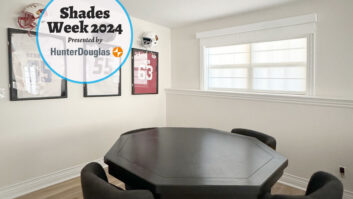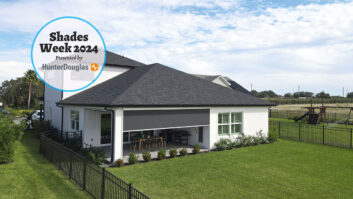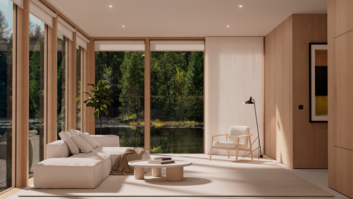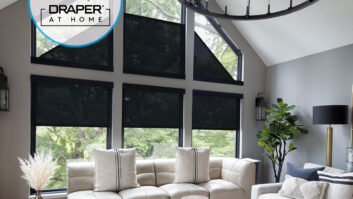
Long-timers in the custom installation industry have been hearing about motorized shades for more than 20 years, but the category has really picked up its pace of acceptance over the past five years or so. There are a few reasons for this current momentum, including the expansion of manufacturer partners that produce shades and have products and programs aimed squarely at this industry.
Another reason is the changing face of the CI business that finds integrators taking on more and more of the home’s technology, including lighting control. Can you really control the lighting in the room if you aren’t controlling the shades? Plus, shades provide a way to get in with builders earlier, and as more and more dealers found success both in the installation of shades and in getting on job sites sooner, acceptance continued to grow.
For those weighing the option of adding motorized shade systems to your client offerings, we offer perspectives from two luxury CI businesses that have found success in selling and installing shades — one being a multi-location superstore and the other being a one-person dynamo who primarily works with new construction.
Starpower
Starpower has four locations in Arizona and Texas and is a full-service luxury provider in every sense of the word — they even sell high-end appliances. Even so, the company did not start selling shades until around five years ago and did not focus on it until two years ago.

“We would only sell shades when we sold a large, complete home project,” says David K. Pidgeon, CEO of Starpower. “We didn’t really focus on shades at all. When we started looking for higher-margin categories, shades were a great fit.”
Pidgeon admits that getting into the shades business is challenging, so focusing on the category meant creating a dedicated selling and installation team.
“Shades are not an easy avenue — there’re measurements and a lot of complications that come with selling them,” he says. “So, we picked out specialists in each showroom, our outside sales teams, and installation department for special training to sell and install shades. Originally, we tried to train everyone, but that did not work out — it takes a special person who wants to dedicate themselves to understanding the process of selling and installing shades.”

The team has a full arsenal of choices to work with, as Starpower represents a number of shading brands, including Hunter Douglas, Lutron, Crestron, Draper, and Screen Innovations. Pidgeon says, “As we continue to grow, that will differentiate us from others and allow us the opportunity to have all the different options that a client could ask for. We’re very appreciative of all the support we receive from our vendors. This has very much contributed to our success with selling shades.”
In terms of competition, there is no leading force in the area, which is another reason shades were an attractive category to Starpower. “We’re finding many builders are in need of a resource for shades, which is a perfect avenue for us,” says Pidgeon. “And once you have the right people out there, business comes in — especially in Texas, where they are an important part of each house. There is a lot of competition here, but there’s nobody leading it. We are working toward being the leading force.”
One of the toughest parts of breaking through in a new category is getting the word out that you specialize in this category. To help facilitate that, each of Starpower’s locations has a design area where customers can work through their plans with all the different brands. They also have events at their showrooms for builders, architects, designers, and homeowners. If carrying a several brands, creating a dedicated staff, and organizing educational events seems like a lot of work, it is. But Pidgeon recommends sticking with it.

“Shades are not as easy to sell as they look and can be costly,” he says. “There’re a lot of pitfalls in measuring, installation, and ordering. There are a lot of areas that, if you don’t focus and give all the resources that are needed, you won’t be successful. You have to plant the seeds and be patient because you will not see success right away. Give it time.
“We’re dedicated and we’re growing, but we have a long way to go to become the leader. However, it is the fastest-growing division in our company right now.”
Innovative Audio
Located in Southern Utah, Innovative Audio is not geographically all that far from Starpower’s stores, but it is on the opposite end of the business spectrum. Innovative Audio is a one-person company that primarily works in new construction. And although shades are a substantial and growing part of his business now, owner Tyler Sandry was not looking to expand his services initially.
“I always stayed away from shades,” he says. “If it came up on a job, I shoved it out to other shade companies — I didn’t want to deal with it. But within the last year and a half or so, it’s been a regular item that I do.”
Why the change of heart? Sandry saw the need from his building partners. “I don’t have the manpower to just focus on shades,” he says, “but I’ve got a few builders now where I do everything under the roof. I’m doing all the shades, audio/video, surveillance, networking…I’m doing the whole deal now for them so that they don’t have to deal with multiple trades at scheduling. Plus, I specialize in whole-home lighting control, and that’s where shades made the most sense because I’m integrating scenes and making everything in the house work together — shades are a big part of that.”

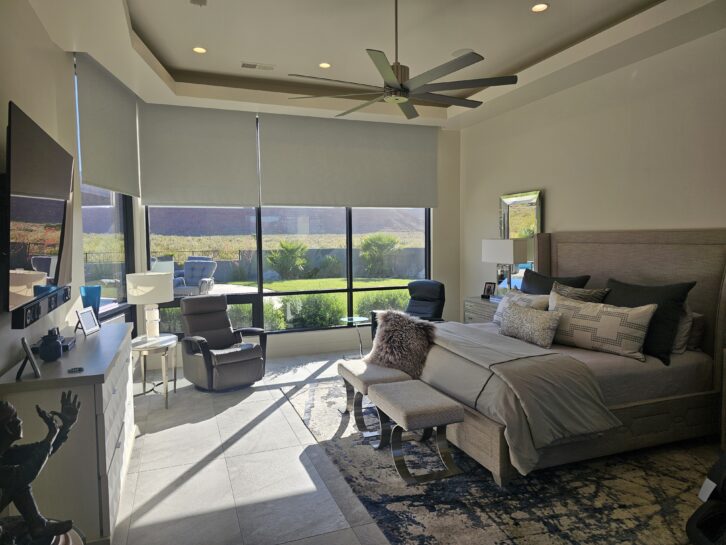
Sandry chose to work with Draper shades, as he was well familiar with the company’s projection screens. “I’ve gone with Draper because they have price-point flexibility, and they can tackle any project or weird scenario that I’ve got. My local rep met me on a few projects in the beginning and helped me measure and factor in the style of mounts. For example, if it’s an inside surface mount, he helped with how much to add or subtract when you’re factoring in all your dimensions.”
Once he was over the learning curve on measuring, ordering, and installing, Sandry was able to quicken the pace at which he could install shades in a home. “If I get shades that are exactly what I need, I can be in and out of a house in a matter of a couple hours. I usually spec about 15 minutes per window depending on the size of the roller, but they’re not super-labor intensive.”
This will come in handy as Sandry embarks on his next big project — working with a builder on a new, 80-home development that will not only include shades in the spec house, but lighting fixtures and lighting control as well.
“I’m working with Draper, Colorbeam, and Loxone on an automation system that will be in each house,” he says. “Depending on the light pollution coming into the window, the shades and the overhead ceiling lights will adjust themselves to maintain a certain level of light within the room at all hours of the day. So, throughout the day the shade is lifting or lowering, and the ceiling lights are brightening or dimming to accommodate and keep that room exactly the same.

“It also manipulates the HVAC system, so if it’s too much sun and the house is trying to allow light in but now it’s getting too hot, it’ll turn on the AC to bring the temperature down but still maintain the light. At that point, it’s not just control — it’s true automation.
“Loxone has been trying to get me to push its product, but I’ve just never had the opportunity to put it in at full scale. So, when this builder came to me with this development idea, I proposed it because they want to build multimillion-dollar spec homes. My approach to building this was, ‘Let’s do some low-voltage lighting with some true automation control and add a wow factor to the development.’ He’s on board for that.”
It’s only been a relatively short time since Sandry was avoiding shades to embracing them full-on. He knows he has made the right decision. “After I did my first job, I saw the value in shades because now I’m a turnkey everything for the client. And there are margins in shades — they pay well. So, it is valuable for them and me.”
